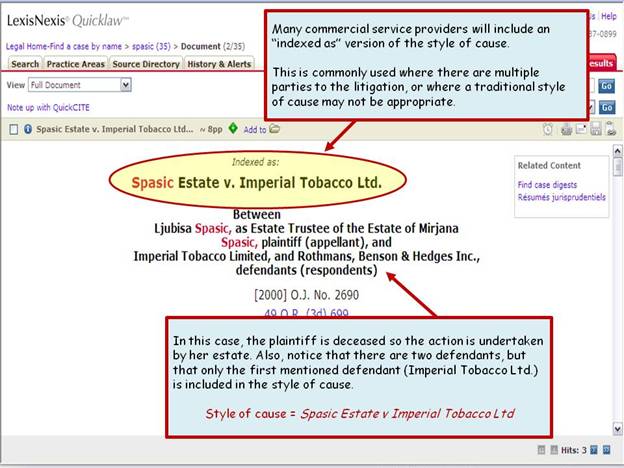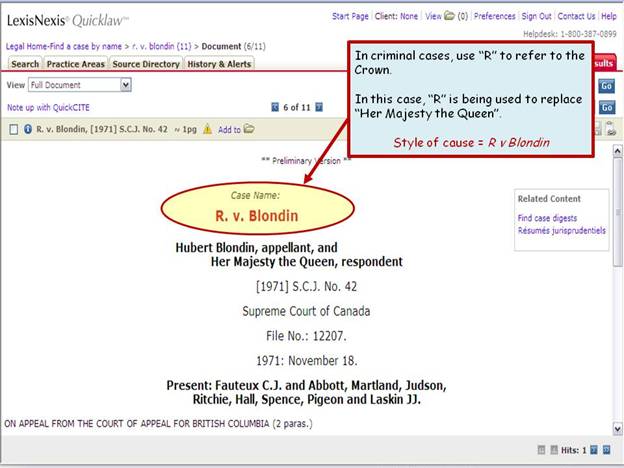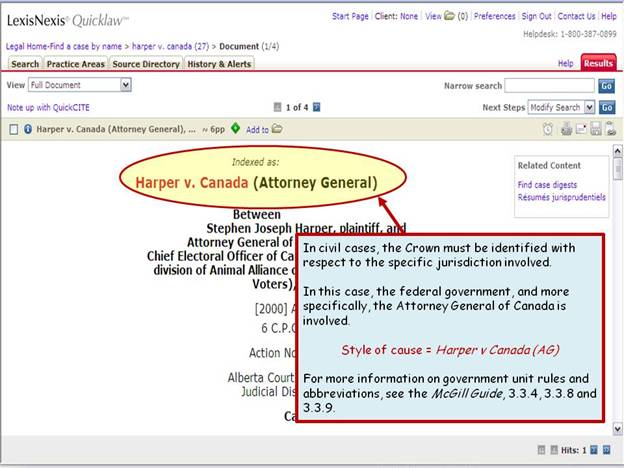Legal Citations – The Style of Cause (McGill Guide, 3.3)
The "style of cause” is the name of the case.
- The style of cause is always italicized (or underlined).
- Typically, cases are named using the family names of the parties to the litigation.
- The last names of the parties are separated by an italicized "v” which is an abbreviation of the word "versus”, although the "v” is commonly pronounced as "and”.
- If the decision of the court or tribunal is only available in French, then the "v” is replaced by a "c” which is an abbreviation of the word "contre”. If the decision was originally in French but has been translated, use "v”.
- In many situations (like class action lawsuits), there are several parties to the litigation.
- In such cases, the style of cause is typically made up of the family names of the first party mentioned on either side.
- In some situations, an action is taken on behalf of a minor or a deceased person.
- In these types of cases, it is the child's guardian or the deceased's estate that becomes a party to the litigation. See Fig 1.1.
Fig 1.1 Spasic Estate v Imperial Tobacco Ltd

The Style of Cause & The Crown
You will also come across litigation involving the Crown (or the government). If the case is a criminal case, then use "R” to refer to the Crown. See Fig 1.2.
Fig 1.2 The Crown in Criminal Cases

If, however, the case is a civil case, then you must indicate what jurisdiction or within what right, the Crown is involved. See Fig 1.3.
Fig 1.3 The Crown in Civil Cases

There are several other guidelines about the naming of parties for the purposes of the style of cause. For more information on the style of cause and the naming of parties, please refer to Chapter 3.3 of the McGill Guide.
The Year of the Decision (McGill Guide, 3.4)
A crucial part of the case citation is the year of the decision. While the year of the decision should be identifiable from the case citation, this can be achieved in a number of different ways.
As a general rule, only include the year of the decision in (parentheses) after the style of cause if it is not included anywhere else in the citation.
